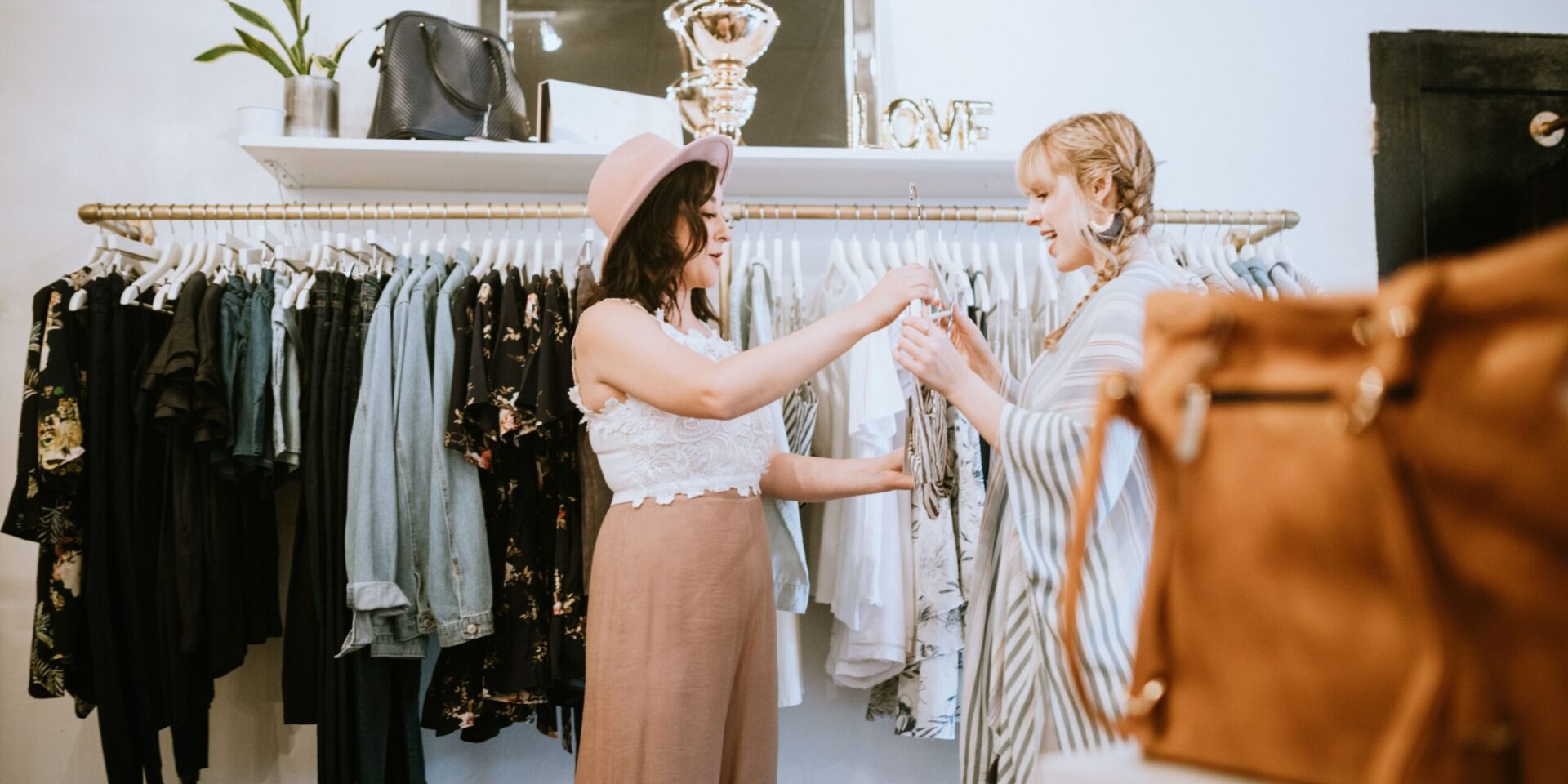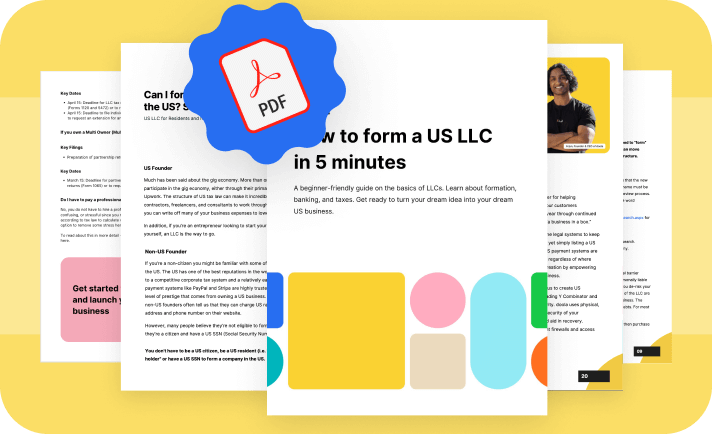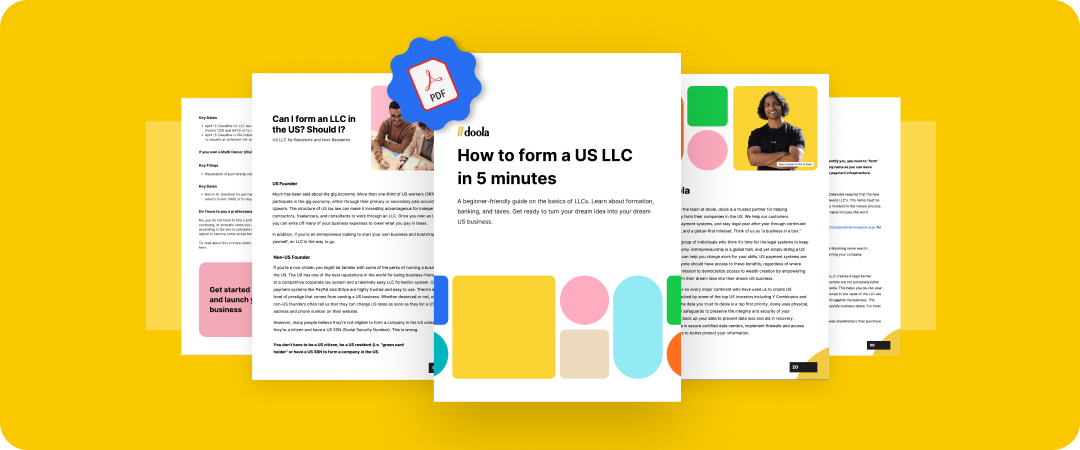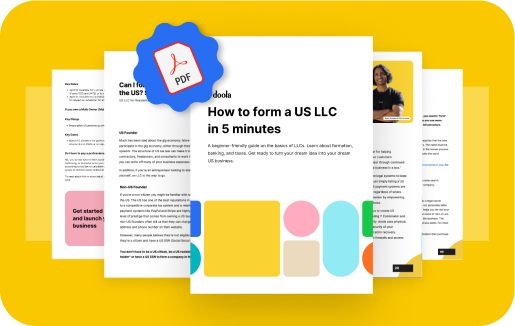Language:
How to Start a Boutique Business

Are you dreaming of setting up the perfect boutique? Do you wish you could step inside a storefront designed to perfection or have an online space that simmers with your brand’s stylish touch? Let’s get you 8 steps closer to pursuing your entrepreneurial wishes of starting a boutique — whether in person or online.
Brick-and-Mortar or Online Boutique Business?
So, what do you envision? As a business owner, are you organizing products and clothes, waiting for your doorbell to ding from an entering customer, or uploading product pictures onto your website, waiting for your phone to ding from a new sale?
Brick-and-Mortar
Benefits: This is your own space! Decorate it the way you want, curate your designs to fit your niche, and be a smiling face to sell your items with a personal, human touch. Plus, shopping in person is still the most popular way that people shop.
Drawbacks: The cost of rent is a large overhead, and your location could make or break your success.
Online Boutique
Benefits: With a lower overhead compared to a storefront, selling online can be a more affordable and simpler way to start your boutique. Designing your website is a lot more stomach-able than designing an entire storefront.
Drawbacks: Manufacturing misinterpretations and shipping malfunctions can make for an aggravating experience. Plus, there’s still the concern of virtual foot traffic: you can’t expect many sales without having a strong social media presence.
Steps to Start a Boutique Business
Let’s go through how you’ll build your dream boutique business. After all, you certainly have the creativity to make it happen. Now let’s get the logistics down!
Step 1: Choose Your Fashion Niche
Choosing a niche sometimes seems intimidating. “But I have to just pick one thing?” Well good news: you don’t. If you have a clear mission, vision, and target market, then your niche will present itself to you. Think about it — you’re a complex person. Maybe you love to rollerskate, hate ice cream, and could spend all week camping. That’s what makes you special, and the friends and family members who are in your life love you for it. You’re a niche, even if you don’t know it, and so is your vision.
Take Cassey Ho, from Blogilates. Her clothing empire POPFLEX started small after seeing the issues in traditional fitness wear, like the middle seam in leggings, uninspiring equipment, and generic styles.
Her why was probably something like, “One of the reasons why so many women don’t like working out is because it’s so boring.”
Her vision was probably something like, “I want to make working out fun and beautiful so more women can be healthy and love doing it.”
Her niche audience, based on her website and messaging, looks like it’s women between 16 and 45 who get motivated to exercise by feeling confident, fabulous, and excited.
So her niche is fitness clothes and equipment that say, “Work out, but make it cute.” (A quote right from her website!)
Hopefully, you’ll see that niches aren’t scary: they’re a combination of who you are and your vision for your business.
Step 2: Develop a Business Plan
You got your niche (along with your why, vision, and audience). Now, you need something that’ll hold you accountable and show others that you’re serious about your brand: a business plan, which you can find templates on the SBA’s website (the Small Business Administration). Some key elements to include in yours will be an outline of the product you’re selling and a market analysis — which will prove that you’ve done your research on your industry and shown how you’ll succeed among competitors, given the current market and financial projections.
Some additional structural elements will include an executive summary at the beginning and an appendix at the end. The SBA link mentioned above also provides two sample business plans to get a vision of how it could look.
This isn’t required for businesses, but if you want to bring on partners or look for investors, it’s wise to have it.
Step 3: Source Your Products
That vision and plan are great, but they’re not going to bring the products to your customers. Sourcing will, and there are a few ways you can facilitate it.
Wholesale
If you dream of beautifully curating your storefront or online space with a collection of brands that you’ve seen in storefronts like Free People or Urban Outfitters, wholesaling is probably right for you. Wholesaling means you’re buying ready-to-wear products (likely) at a discount in exchange for buying in bulk. This is a B2B (or business-to-business) transaction where you’ll budget for purchasing products, and then price them at a higher, retail value, to compensate for your time being the middleman and running your business.
Here are some popular wholesaling sites for boutiques.
Handshake — Shopify marketplace
Bloom — Dresses, tops, and other boutique styles
Sugarlips — Macy’s, Urban Outfitters, and more
To find other brands wholesaling sites type in [your brand] wholesale on Google. We were able to find Free People’s wholesaling site by doing this.
Manufacturing
You have the vision, and you need someone else to execute it. Manufacturing means collaborating with a product manufacturer so you can custom-create your own products. There are tons of manufacturers out there who can make a lot of different products, so by knowing your niche, you’ll be able to find one that specializes in the products you sell and the materials and design approaches you need.
Here are a few we found for you to get started.
Dropshipping
This is the only sourcing method that doesn’t require upfront costs. But what you don’t need in upfront costs, you will need time for researching dropshipping methods, setting up a system, and getting a customer base that will buy.
Dropshipping is order fulfillment that only requires you to purchase inventory when it’s needed. Your customer buys, you look over the products and you get them shipped directly to the customer. Take a look at Shopify’s blog post on dropshipping if this sourcing method particularly piques your interest.
Handmade or Handsourced
If you have the craftiness to make your boutique bespoke, then you’re perfectly capable of handmaking or hand-picking the products you sell, whether in person or online. You’ll need to budget for both supplies and for your time spent making the clothing or sourcing the products.
Spoonflower is a great brand that brings professionally designed fabrics to businesses and individuals that even lets you wholesale order your fabric to then handmake!
If you like to source thrift items, then this is your category, too! Many estate sale and thrift store lovers spend time finding items within their company’s niche, purchasing them at an incredible offer, cleaning them up a little, and staging them beautifully for a photo shoot or staged in-store. Charge it at a retail price to pay yourself back for the time spent on Saturday mornings waiting in line for the perfect mirror or sconce!
Step 4: Price Your Products
Following step three will show you the costs of sourcing a little clearer. Now you can sum up the amount that you’ve spent on a single product and price it accordingly to pay you back for your time spent on it.
Remember your business plan in step two? Having the right price will ensure you’re able to hit the projections you set out for in it, and knowing your niche (in step one) will give you an understanding of what your niche market wants to pay for something cheap or expensive.
You might have to tweak it a little at the beginning to see how much customers are willing to spend — or not spend — on your products.
Step 5: Choose and Legitimize Your Business Entity
It’s time to get official.
Your plans are all laid out, so let’s put it on (a legal piece of) paper. Limited liability companies (LLCs) are a common business type for small businesses to start, but here are a few others to browse.
- Sole proprietorship — A business where there’s no legal distinction between the individual and the business.
- Partnership — An agreement made by two people who want to go into business together. Sometimes is official, by being a limited liability partnership; sometimes isn’t, by being on a handshake.
- LLC — A business type that protects the owner (or member) from losing personal liability if they get sued. A popular business type for smaller businesses just starting.
- Corporation — A business type owned by shareholders with a board of directors to oversee it. It can be a for-profit or a non-profit.
If you’re going back and forth between a few, or want to establish it with some expert oversight, our doola team is just a chat bubble away.
Why register your business?: To legitimize the business both for yourself and for your customers. Plus, certain business types qualify you for tax write-offs and give you the ability to open a business bank account and a business credit or debit card.
Why open a business bank account and credit or debit card?: To separate your personal and your business finances. It’ll give you (and your CPA or accountant) a sigh of relief when bookkeeping or doing your taxes.
Step 6. Invest in General Liability Insurance
You might have thought that you only need liability insurance if you have a storefront, but business insurance is beneficial for all types of boutique businesses to protect you from any claims against product defects or harm from your products. (This is why it’s important to pick a great manufacturer if you’re choosing that route.)
The insurance is going to vary based on your business. Here are a few for both types of boutiques.
For online boutiques: The Hartford, Next, Chubb
For in-person boutiques: Biberk, The Hartford, Progressive Commercial
Step 7: Decide on the Point-of-Sale (POS) System
We mentioned POS a bit ago when discussing business banking. A POS, or point of sale system, helps you check customers out either in-store or online. They help intake credit card information so buying your products is seamless and simple.
Common POS systems for in-person boutiques: Clover, Square, Lightspeed
Common checkout systems for e-commerce boutiques: Stripe, Shopify, Helcim
Step 8: Sell and Market Your Products
The key to marketing your boutique is to find where your customers are.
For a brick-and-mortar business — Some say brick-and-mortar is dead, but numbers don’t lie. For a successful brick-and-mortar business, you need to optimize community as your storefront’s driving force. Offer a free event at your store to increase brand awareness and foot traffic, create a popup shop in a highly trafficked area like the local gym, and even use posters around coffee shops. When you’re looking for a space to rent, think about finding a location your niche audience will already be going to.
For an e-commerce business — Use the power of (free!) social media, especially if your startup costs are limited. There’s no need to overwhelm yourself with too many platforms at once. Try starting with one, such as Instagram, which is great for visuals and videos, or TikTok, which is great at helping smaller accounts get seen quickly.
You’re Already a Success Because You’re Doing the Work
What differentiates aspiring creative entrepreneurs from official creative entrepreneurs is the ability to take action. Anyone can have ideas floating around in their head, but not everyone can follow the steps to take action. That’s why at doola, we encourage small businesses to start their businesses right. Alongside our business formation services are our business management and bookkeeping, so the business bank account and POS you created all speak the same language to each other.
Start your LLC and manage your boutique’s finances with doola’s bookkeeping services. We’re rooting for you!
FAQs
How much does it cost to start a boutique business?
An e-commerce dropshipping business doesn’t require any upfront fees but does require time to set up your system and grow an audience, while a brick-and-mortar boutique business requires between $50,000 and $100,000 to start, according to Korona POS.
Do boutique owners make money?
Brick-and-mortars can still thrive, as long as they’re open to approaching their business differently than they may have in the past, using efforts like creating community and curating a beautiful in-store experience.
How do I get funding to start a boutique?
You can get funding by establishing your business (as a sole proprietorship, partnership, LLC, or corporation) so you can be eligible for small business loans through places like banks, the SBA, and nonprofits.
Where is the best place to start a boutique?
Do your research on places that have high foot traffic and around other businesses that your ideal customer frequents.
Keep reading
Start your dream business and keep it 100% compliant
Turn your dream idea into your dream business.
















